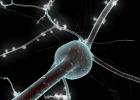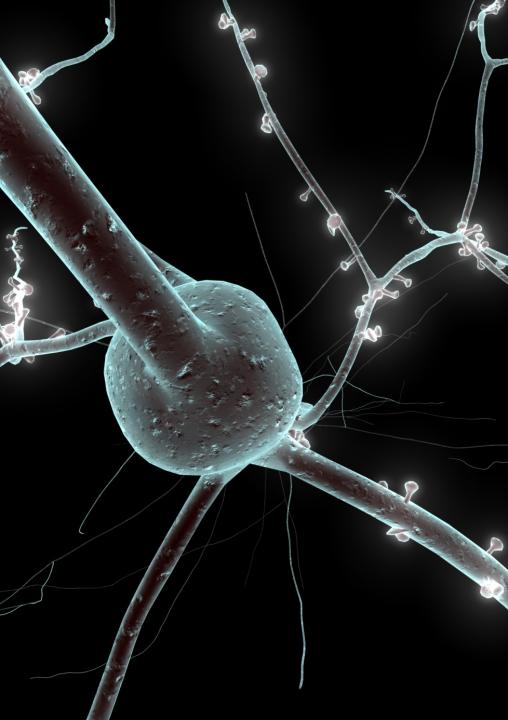You are here
The Human Brain Project has begun

With more than 130 research institutions from Europe and around the world on board and hundreds of scientists in a myriad of fields participating, the Human Brain Project is the most ambitious neuroscience project ever launched. Its goal is to develop methods that will enable a deep understanding of how the human brain operates. The knowledge gained will be a key element in developing new medical and information technologies. On Monday, October 7, 2013, the project partners met at EPFL (Ecole polytechnique fédérale de Lausanne), the coordinating institution (view the video below). Over the course of a week, neuroscientists, doctors, computer scientists and roboticists will fine-tune the project’s details. Six months after its selection by the EU as one of its FET Flagships, this project of unprecedented complexity, with an estimated budget of €1.2 billion, has now been set in motion.
Six platforms to move the project forward
The Human Brain Project’s initial mission is to launch its six research platforms, each composed of technological tools and methods that ensure that the project’s objectives will be met. These platforms are: neuroinformatics, brain simulation, high-performance computing, medical informatics, neuromorphic computing and neurorobotics.
Over the next 30 months scientists will set up and test the platforms. Then, starting in 2016, the platforms will be ready to use by Human Brain Project scientists as well as researchers from around the world. These resources – simulations, high-performance computing, neuromorphic hardware, databases – will be available on a competitive basis, in a manner similar to that of other major research infrastructures, such as the large telescopes used in astronomy.

In the field of neuroscience, the researchers will have to manage an enormous amount of data – in particular the data that are published in thousands of scientific articles every year. The mission of the neuroinformatics platform will be to extract the maximum amount of information possible from these sources and integrate it into a cartography that encompasses all the brain’s organizational levels, from the individual cell all the way up to the entire brain. This information will be used to develop the brain simulation platform. The high-performance computing platform must ultimately be capable of deploying the necessary computational power to bring these ambitious developments about.
Finally, the Human Brain Project includes an important component whose objective is to create neuro-inspired technologies. Microchips are being developed that imitate how networks of neurons function – the idea being to take advantage of the extraordinary learning ability and resiliency of neuronal circuits in a variety of specific applications. This is the mission of the neuromorphic computing platform. The neurorobotics platform will focus on integrating neural network simulations into robots (initially virtual ones), who will benefit from new aptitudes such as learning ability or resiliency.Medical doctors associated with the project are charged with developing the best possible methods for diagnosing neurological disease. Being able to detect and identify pathologies very rapidly will allow patients to benefit from personalized treatment before potentially irreversible neurological damage occurs. This is the mission of the medical informatics platform, which will initially concentrate on compiling and analyzing anonymized clinical data from hundreds of patients in collaboration with hospitals and pharmaceutical companies.
Next milestone: 2016
The platforms will be set up as part of a global, coherent project. For example, the scientists will depend on the brain simulation not only to better understand the mechanisms of neurological disease and identify new therapeutic targets, but also to update functional principles or even accelerate the development of neuro-inspired technologies. At the same time, these same technologies could contribute to meeting the simulation’s computational requirements. The success of the Human Brain Project depends in large part on the dynamics of exchange that will occur between its six platforms.
The scientists involved in the Human Brain Project now have two and a half years to finalize the research platforms. Once these are established, researchers will have at their disposal the infrastructures, tools and methods they need in order to meet their objectives. Now, nine months after its selection as a EU Flagship, the project is officially on its way.
Cineca in HBP
Cineca is one of the four HPC infrastructures creating the HPC platform that provides the HBP and the wider European Neuroscience community with the supercomputing support, big data capabilities, middleware and visualization support necessary to create, simulate and analyze multi-scale models of a complete human brain.
In specific, Cineca will be the HBP Massive Data Analytics Supercomputer, providing 2 Petaflop/s of peak performance and 200 Terabytes of main memory, integrated with a mass storage facility of more than 5 Petabytes of working space. The system will be integrated with a Data Facility of around 5 Petabytes for on-line disk storage repository and more 10 Petabytes for long term data preservation, providing efficient data life-cycle management of structured and un-structured data generated by the HBP.
The objective is to provide an efficient Data Centric HPC facility to store, manage and process the data images produced by the HPB and, in particular, by the LENS (the European Laboratory for Non-Linear Spectroscopy in Florence) via laser confocal microscopy at micron-scale, related to the neuro-anatomy of the entire mouse brain and possibly larger brain samples up to the primate scale brain.
The image analysis represents a complex activity, of paramount importance, to study the brain structure, neuron mapping, connections and functionality. Single neurons usually have projections that run through the whole brain and to map the whole neuronal network, advanced volume reconstruction techniques allowing high resolution are needed.
To scannerise the entire brain volume, many parallel stacks of images must be acquired. Afterwards these images must be properly aligned and stacked with ad hoc algorithms to produce a single large data set representing the whole brain (each dataset is in the order of 1-5 Tbyte per cm3).
Specific services for big data activity are being implemented. The first step, already in production, is the Cineca Data Repository, a service to store and maintain scientific data sets, with an high level of quality, including reliability and scalability, allowing the users to safely back-up data and at the same time manage them through a variety of clients. The service is implemented through iRODS, which relies on plain filesystems as back-end to store data, represented as collections of objects, and on databases for metadata. The service's architecture has been carefully designed to scale to millions of files and petabytes of data, joining robustness and versatility, and to offer to the scientific communities a complete set of features to manage the data life-cycle.
Furthermore, Cineca will provide services to remotely visualize and navigate the 3D images - allowing annotations, proofreading and to perform measures, via automatic processing - applications for image restoring (e.g. de-convolution, de-noising), segmentation, data mining and extraction of structural information.
Press kit and additional Information
Press Kit (documents, photos, videos and B-roll for TV broadcast):
http://bit.ly/2013_HBPSummit
Human Brain Project website:
http://www.humanbrainproject.eu/
About the Human Brain Project platforms
http://www.humanbrainproject.eu/discover/the-project/platforms
About the EU FET Flagship program:
http://cordis.europa.eu/fp7/ict/programme/fet/flagship/
Website of EPFL, Human Brain Project coordinating institution:
http://www.epfl.ch
Contacts
Hillary Sanctuary, EPFL international press officer:
hillary.sanctuary@epfl.ch or +41 79 703 48 09
Lionel Pousaz, Head of EPFL press service:
lionel.pousaz@epfl.ch or +41 79 559 71 61
David Horrigan, Head of Human Brain Project communication:
david.horrigan@epfl.ch or +41 79 502 24 51
For Cineca: Giovanni Erbacci, g.erbacci@cineca.it
